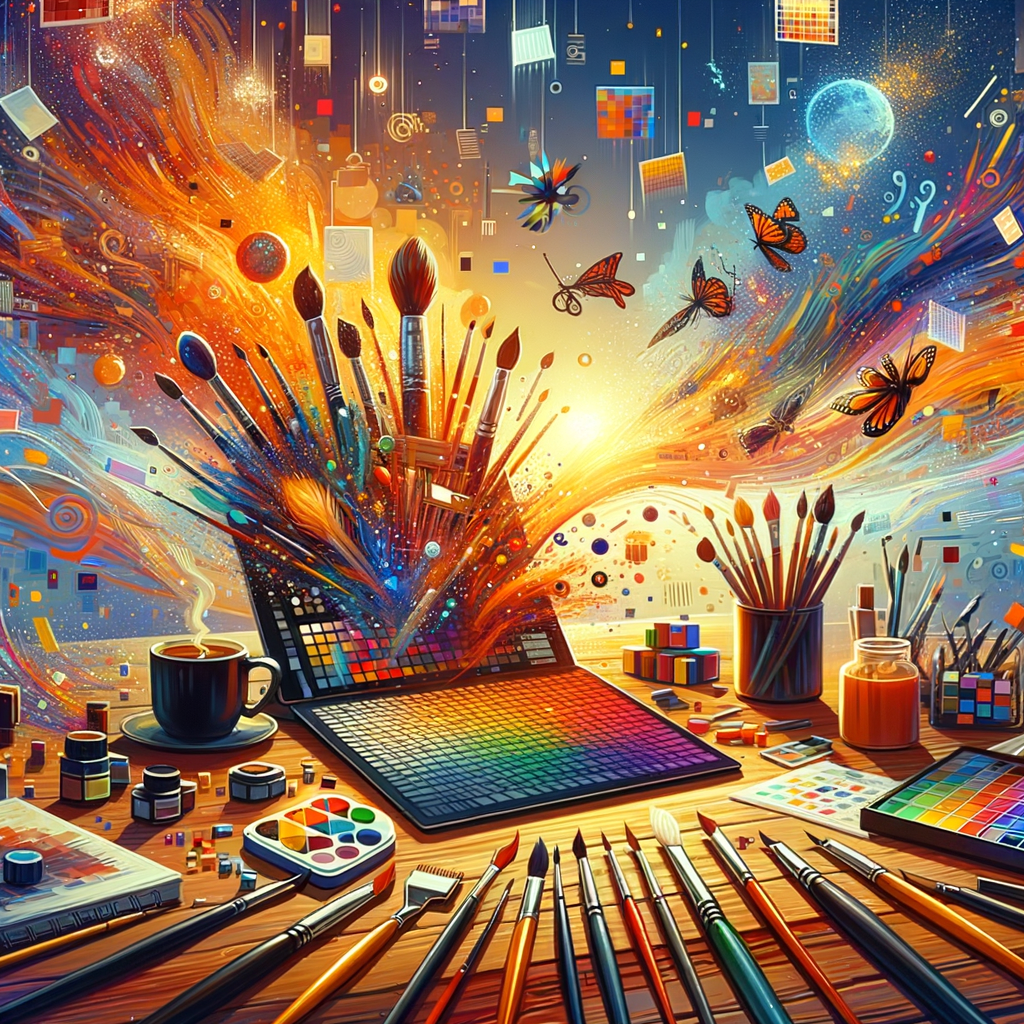
Color is one of the most powerful tools in an artist's arsenal. For digital artists, understanding color theory can dramatically improve the quality of their work. This article delves into the principles of color theory, the significance of the color wheel, and practical techniques for applying color effectively in digital art. Whether you're a beginner or an experienced artist looking to refine your skills, mastering color theory is essential for any creative journey.
Color theory is a body of practical guidance to color mixing and the visual impacts of specific color combinations. Understanding how colors interact with one another can help a digital artist make more informed decisions in their work. This guide will help you navigate through common color theory concepts, and it will provide practical tips to incorporate these ideas into your digital artistry.
One of the foundational aspects of color theory is the color wheel. The color wheel is a circular diagram of colors arranged by their chromatic relationship. The three primary colors are red, yellow, and blue; they cannot be created by mixing other colors. Secondary colors, made by mixing two primary colors, include green, orange, and purple. Lastly, tertiary colors are created by mixing a primary color with a secondary color, yielding hues like red-orange or blue-green.
Understanding the color wheel allows artists to recognize complementary colors—opposite each other on the wheel—that enhance each other when used together, as well as analogous colors—next to each other, which create harmony. Implementing such techniques can lead to striking and aesthetically pleasing artworks.
Moreover, the concept of warm and cool colors introduces another dimension to your artwork. Warm colors (reds, oranges, and yellows) can evoke feelings of warmth and energy, while cool colors (blues, greens, and purples) often suggest calmness and serenity. By thoughtfully choosing your color palette based on the emotions you wish your artwork to convey, you can strengthen the impact of your piece.
Throughout this article, we’ll also explore color mixing techniques. In digital art, color mixing can be achieved through various software tools that allow for layering, blending, and adjusting hues. Experimenting with different ways to mix colors digitally can result in unique effects that enhance your overall style.
Another critical aspect to understand is color density and its effect on composition. Lighter colors tend to recede into the background, while darker colors come forward, giving depth to your artwork. This feature can add complexity and dimension to your compositions, guiding the viewer’s eye to focal points within your piece.
As we move forward, we’ll also discuss the psychology of color, which explores how different colors can influence mood and perceptions. For instance, reds are often associated with passion or danger, blues with tranquility, and yellows with happiness. Understanding these associations can help you make intentional choices in your works that resonate with your audience.
Lastly, we will share exercises and practical projects designed to help you practice and internalize these concepts, ensuring that your mastery over color theory influences your future creations. Whether you’re creating character designs, landscapes, or abstract pieces, the understanding of color theory will elevate your digital art to new heights.
Join us on this colorful journey as we delve deeper into the various aspects of color theory and its practical application in digital art. Mastering these concepts can open up endless possibilities for creativity and expression, helping you become a more effective visual storyteller.

